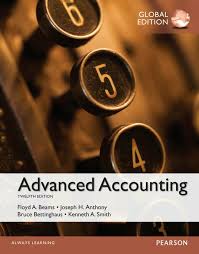COURSE DESCRIPTION
 This course discusses business combinations, the equity and cost methods of accounting for investment in common stock, and consolidated financial statements. It also discusses the accounting of derivative and foreign currency transaction.
This course discusses business combinations, the equity and cost methods of accounting for investment in common stock, and consolidated financial statements. It also discusses the accounting of derivative and foreign currency transaction.
After studying this course student should be able to :
- Understand the essence of business combination and properly account for variety of business combination transaction.
- Properly account for the stock stock acquisition by investor
- Understand the consolidated balance sheet at the date of stock acquisition and after stock acquisition, consolidated income statement.
- Understand the consolidation techniques and procedures under the equity method.
- Properly account for the intercompany profit transaction (inventories , plant assets and bond), changes in ownership interests, indirect and mutual holdings, subsidiary preferred
- stock, subsidiary convertible bonds.
- Understand the consolidated earning per share, consolidated income taxation, push-down accounting, and corporate joint venture.
- Understand and properly account for derivatives and foreign currency transactions.
Main Reference :
Floyd A. Beams 2015 edisi 12, Joseph H. Anthony, Robin P. Clement, and Suzanne H. Lowensohn (2009), Advance Accounting, 10 th Edition, Pearson Prentice Hall.
Additional Reference :
PSAK, IFRS
